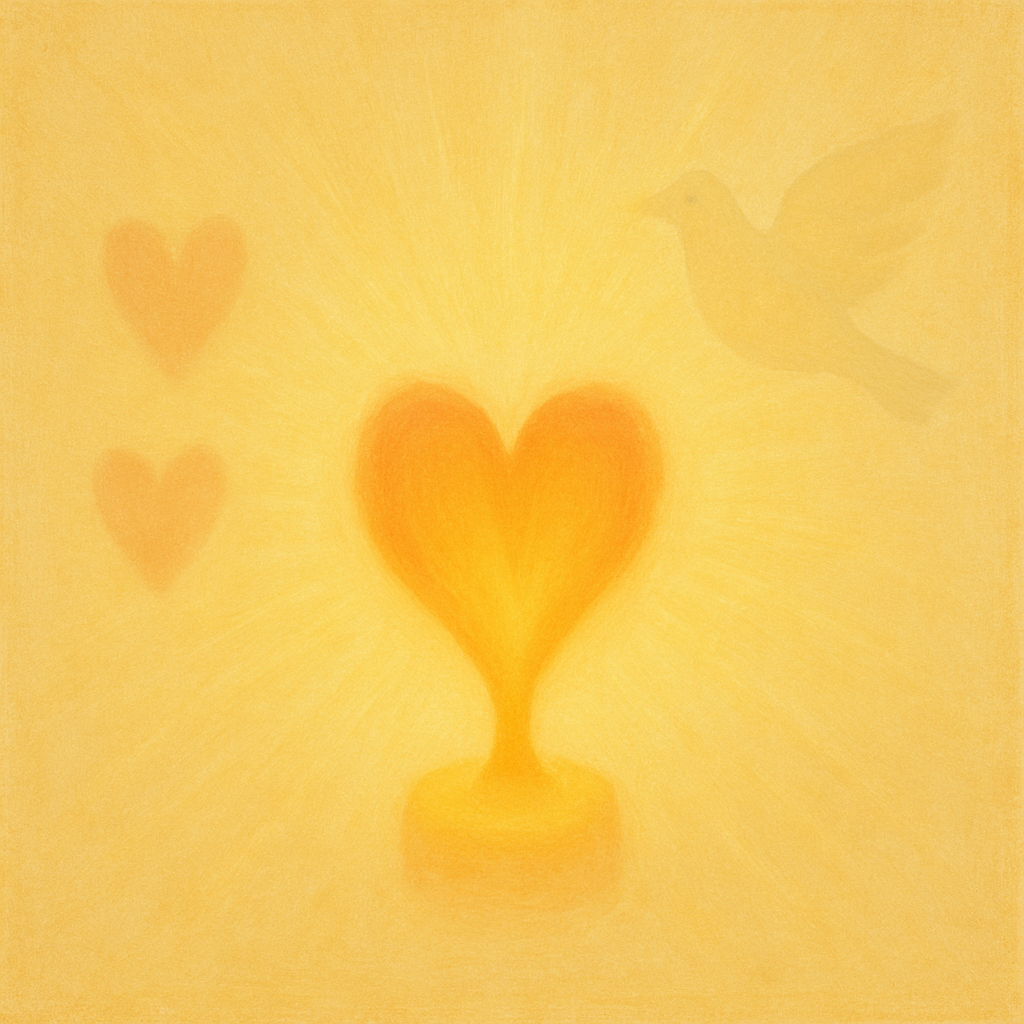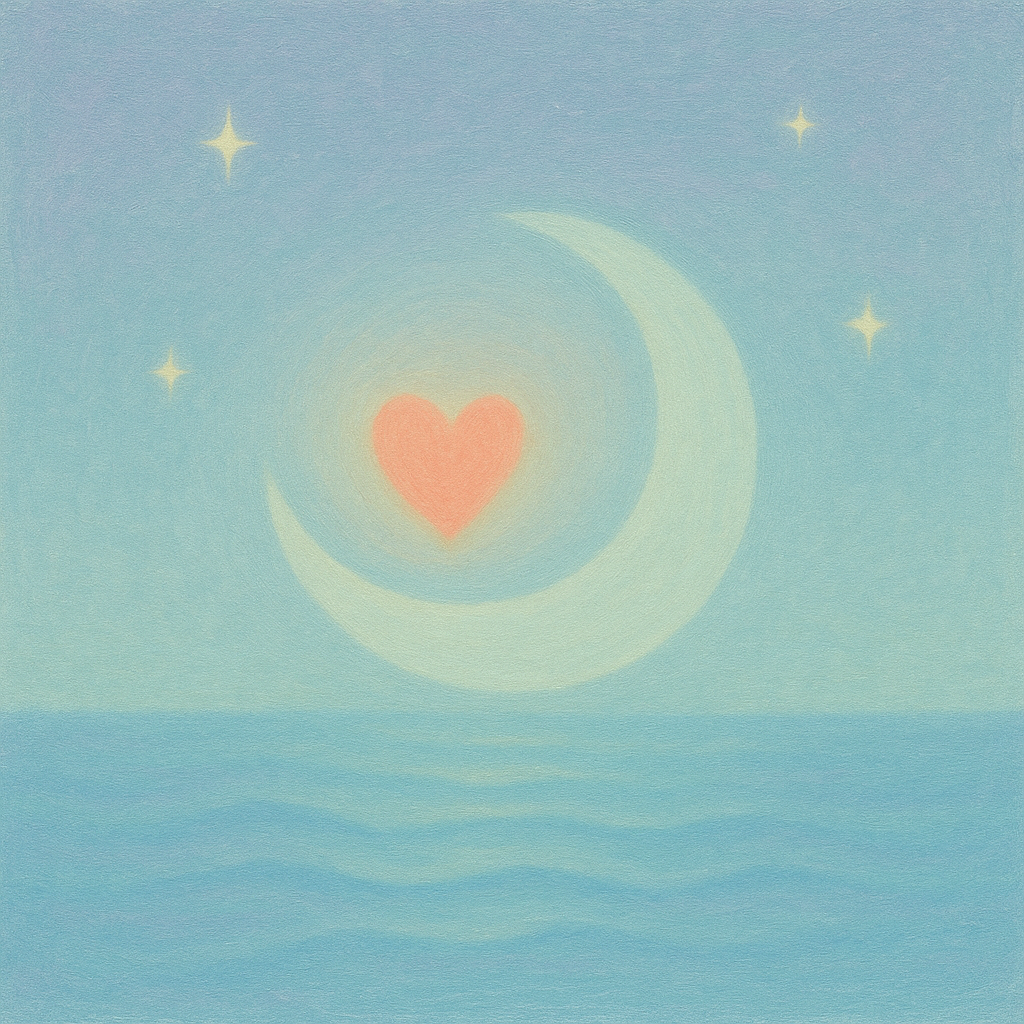How Love’s Neural Fire Becomes Humanity’s Eternal Flame”
In the quiet temple of the heart, the longing for another and the longing for God sometimes merge into one flame. In love and in worship, our minds light up the same circuitry. Modern brain scans show that the rush of romance, the ecstasy of sex, and the fire of spiritual experience are all chimneys on the same neuroscientific fireplace. As Wired reported, “religious experiences are neurologically similar to the euphoria of love” . In other words, when someone says “I feel your love,” science finds a mirror: the nucleus accumbens, the brain’s pleasure center, glows warmly in both cases. It’s as if Cupid and the mystery of the cosmos share a stethoscope pressed to the skull.
Consider this: looking at a photo of a beloved triggers floods of dopamine in the brain – the “reward” chemical that makes love feel so delicious . Dopamine surges in the ventral striatum tell us, “This is good, seek more of this.” During orgasm, this system booms even louder: “dopamine is released… and [acts] on the reward system in the nucleus accumbens — the same area associated with drug addiction” . Our most primal acts of closeness set off the same fireworks that addictive drugs do. In fact, love and lust literally hijack the brain’s substance abuse circuits – a reminder that what we often call “falling in love” is a kind of healthy, self-made high. Love flings our rational prefrontal cortex to the side, and a primal, childlike jubilation takes its place.
Yet the same flood of dopamine, the same limbic warmth, can be kindled by prayer, meditation or awe. In a landmark study, researchers scanned the brains of young Mormon worshippers during fervent prayer. Each time a believer “felt the Spirit,” his nucleus accumbens flickered on . Simply put, church and courtship turn on the same inner circuitry. Wired reports that “the reward-based neural systems associated with drug-taking were activated when individuals were ‘feeling the spirit’” . In one telling quote from that study: the nucleus accumbens – the same hub that rewards drugs and desire – was “repeatedly activated” during moments of religious joy .
Brain science paints a grand, unified picture: spiritual feeling and romantic feeling are first cousins. When you fall in love or pray in wonder, your limbic system (the emotional deep brain) quietly swells. Neurotheologians note that the amygdala – the limbic “sentinel” of emotion – governs motivation, affection and meaning . It literally writes love poems with hormones and neurons. During worship, scans often find that the emotional brain brightens: “an increase in the limbic system, which modulates emotion, has also been recorded during prayer” . In simpler terms, the circuits that make our hearts pound at a lover’s touch also make our chests swell with reverence.
Even the temporal lobes – mysterious side regions of the brain – seem to light up in both sacred and erotic ecstasy. Neurologist V.S. Ramachandran speculates that tiny “kindling” storms in the temporal lobes can ignite the limbic heart, making anything (a flame, a hymn, a lover’s gaze) feel charged with meaning . One hypothesis holds that when the temporal lobes spark and feed the limbic system, a person might suddenly see divine purpose in the ordinary. Ramachandran described this as a state where “hyper excited temporal lobes kick start the limbic system emotions” so that the world seems drenched in revelation . Likewise, in the Jefferson University study of “Orgasmic Meditation,” regions of the temporal lobe and limbic system (the home of emotion) showed dramatic shifts, and participants reported “profound spiritual experiences including intense feelings of oneness, unity and connectedness” . In other words, a practice that bridges sex and meditation left both lovers feeling an intimate bond with all existence.

What emerges is a scientific truth many poets sensed: the brain’s reward and emotion networks fuel both love and faith. One neurologist put it plainly: sexual and spiritual experiences are both “ecstatic,” two sides of the same coin . Both can blaze through us with a kind of crazy grace. Magnetism and meaning flow through dopamine pathways and limbic circuits alike. As Wired quipped, the nucleus accumbens (where dopamine reigns) tells the brain that “love and drug-taking are pleasurable and should be repeated” – and it does the same for devotional rapture . There is no single “God spot” in the brain; instead, all these regions work together like a choir , singing in harmony whenever we glimpse something divine or irresistible.
Across cultures and centuries, philosophers and poets have intuited what our neurons now confirm: love and longing lie at the root of the sacred. Consider the path of a mystic in Sufism, for example. Sufis speak of the soul’s journey as one of lover and Beloved. In the words of the 9th-century mystic al-Hallaj, “I am He whom I love, He whom I love is me” . Love unites the lover and the divine into one being. The Persian poet Rumi tells of the soul as a broken reed flute, sighing for unity:
“Everyone who is far from his source wishes back the time when he was united with it.”
His reed’s lament is our own: every human heart is crying out in memory of a cosmic oneness, fed by love’s sweet sorrow. Even the early Sufi Rabi’a of Basra cut to the chase in her theology of desire: she called spiritual love a “disease no doctor can cure,” only to add that “only union with the Friend (the Beloved) can cure it” . In this view, earthly love becomes a training ground for heavenly love. The 8th-century mystic Bayezid Bistami echoed this passion-to-purpose: he said he would not exchange all the paradises in creation for one longing sigh of the soul’s yearning .
These mystic images have counterparts around the world. In the Hindu bhakti tradition, lovers of Krishna speak of divine love as the sweetest obsession, just as quantum as any romantic tale. The Song of Songs in the Old Testament reads like a vineyard tryst with God, language so sensual that medieval rabbis finally called it an ode to the soul and the Beloved. Taoist iconography of the yin and yang, Hindu statues of Ardhanarishvara (half Shiva, half Shakti) – all point to a cosmic embrace of masculine and feminine principles. Even those strange symbols of a lingam and yoni in temple sculpture remind us that creation itself is born of sacred intimacy. We see it in myth too: Isis and Osiris of Egypt embody love that even death cannot hold; Ishtar and her lovers had rites of renewal; Greek Eros matches with Psyche to tell of the soul’s union with love. Across millennia, poets and prophets have told one story in many tongues: human longing is the spark that kindles the flame of the divine.
This intertwining of biology and spirituality means that sexuality is not just a base urge, but part of our cultural spirit. From fertility festivals to wedding hymns, every culture weaves procreation into its myths. The air is thick with symbolism: sex isn’t merely a drive but a dance of creation. For example, in agriculture societies springtime rites often feature symbolic love-making to bless the fields with fruitfulness. The Yoruba goddess Oshun is both river and lover, embodying love’s life-giving currents; Inanna of Sumer brings the rains (and love) through her union. Even scientists note that long-term romantic bonding (with its oxytocin and closeness) tends to make people healthier and more resilient – as if our bodies remember that cooperation and care were once survival skills and remain sacred blessings. The very hormones of affection (oxytocin, dopamine, vasopressin) double as the embers of empathy and moral bond. In short, sex and procreation have rippled into every corner of human culture, giving folklore, religion and family their heartbeat.
Science can tell us which neurons fire, but the soul asks a different question: why? For millennia, philosophers answered that love is the first language of existence. Plato saw love (Eros) as an urge that lifts the soul toward the light of ultimate Truth. St. Augustine famously summarized Christian faith in two words: “God is Love,” implying that our craving to be loved is the very longing for God. Rilke, the poet, warned to love what happens to us: to welcome our humanity is to welcome a kind of providence. Even secular philosophy acknowledges it: Jung spoke of anima and animus, the inner masculine and feminine reaching to unite the psyche. What all these voices agree on is that it is love – romantic, erotic, compassionate – that draws us out of ourselves into something larger.
In the end, neuroscience and story converge on one warm truth: all of us are creatures of connection. Our brains reward us for forging bonds, whether with a person or with the ineffable. Our myths map that inner geography in symbols of lovers, gods, and rivers of longing. The desire that pulses in our flesh is the same longing that reaches toward transcendence. And so the final reflection: perhaps the human heart is a temple where love and spirit entwine in dance. We are drawn toward another, toward beauty, toward the infinite, by the same flame. In that way, every tender touch and every whispered prayer is a word in the same love song – a testament to our deep yearning to belong, to each other and to the mystery beyond.
Sources: Science and spiritual writings intersect. Brain studies confirm that romantic love, sexual ecstasy, and devotional rapture activate common neural circuits (notably dopamine-driven reward centers and limbic emotion areas) . Myths and philosophies across cultures describe love as the fountainhead of spiritual awakening , showing that the longing of the heart often becomes a bridge to the divine.
